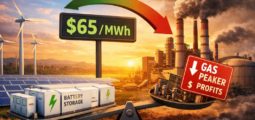Inflation, Used Cars, Silicon Chips and Supply-Demand: Links in a Worrying Chain
 Chips — no, not the potato or chocolate kind, the electronic ones – are a driving force behind a spike in inflation.
Chips — no, not the potato or chocolate kind, the electronic ones – are a driving force behind a spike in inflation.
Whether it’s cars or computers, we depend on silicon chips — and a global shortage is having some serious effects on the US economy.
Inflation, the relative rise in prices measured through a combination of goods and services, is — to some economists — a clear measure of economic health. Institutions like the Fed and BOE make it their job to keep track of inflation — and regulate it. Head of the Fed Jerome Powell said in October that he expected inflation to continue rising into 2022.
So, what does that mean?
Understanding why high levels of inflationary pressure are bad goes beyond the rising cost of your week’s shopping. While that’s a concern, the level of inflation in the US — gauged at 6.2 percent in October 2021 — is downright scary. To put that into context, the Fed is aiming for a sustained rate of two percent.
High inflation can lead to a number of economic consequences, from the erosion of relative purchasing power to decreased borrowing, but a crucial question is this: Why it is so high?
There are two answers to that: a global lack of supply, and a surplus of spending money. The automotive industry encompasses both.
Cars are constantly improving in terms of efficiency, gadgetry, and features. Where they go, hardware must follow. That means bigger screens, more processing power and — crucially — more chips. But global supply chains are struggling to match the growing demand.
The cause is multifaceted, although a large portion of the blame can be placed squarely on the pandemic. Social distancing guidelines caused the closure of many component-producing facilities, leading to a fall in global supply. In Malaysia, government-imposed closures came in with such force that police were summoned to keep workers from entering factories.
These chip shortages have impacted several industries, causing a fall in the total supply level of many electrical goods. That has kicked-up inflationary pressure — and the solution still isn’t clear.
The other side of our inflation story is, of course, demand. In August 2020 the used-car market surged, as people splashed-out on new vehicles. But the shortage, remember?
Used cars were the next-best option; in the UK, sales doubled to 2.17m units in the second quarter of 2021, compared to the same period one year ago. The same situation played out in the US, and the median cost of used cars jumped 21 percent from the year before.
As the pandemic’s worst effects gradually recede, people are finding themselves with more disposable income. A fall in consumption across-the-board in 2020, and the continuous supply of government mandated stimuli, have effectively put money in wallets. People are looking to buy.
The simultaneous reduction in supply and increase in demand caused a spike in general prices, aka inflation. The real test comes in deciding the best way to manage the imbalance: how should companies and businesses try to resolve the supply-demand problem?
A change in consumer preferences is one result of the pandemic — moving away from potentially germ-ridden public transport, for instance, and a renewed interest in electric vehicles. According to a report by McKinsey, interest in sustainability is burgeoning. The management consultancy firm believes that as consumers realise the impact they are having on the environment, there will be a global shift towards EVs and hybrid vehicles.
The rise in inflation sparked by a sudden interest in used cars and the lack of new cars is probably a short-term affair. Whether companies can leverage the situation to some kind of benefit remains to be seen.
By Yogesh Patel
You may have an interest in also reading…
Liberalism and Its Discontents: Francis Fukuyama on the Future of History
Poor Francis. History didn’t end after all. Neither did liberalism triumph over the forces of evil. Possibly one of the
World Bank Readies $160 Billion Emergency Aid Package
World Bank President David Malpass has joined IMF Managing Director Kristalina Georgieva in urging bilateral creditors to extend debt relief
UK Struggles with Economic Illiteracy as Crisis Worsens
Britons’ grasp of basic economics is tenuous at best and more likely than not, virtually inexistent. A report commissioned by



















































































